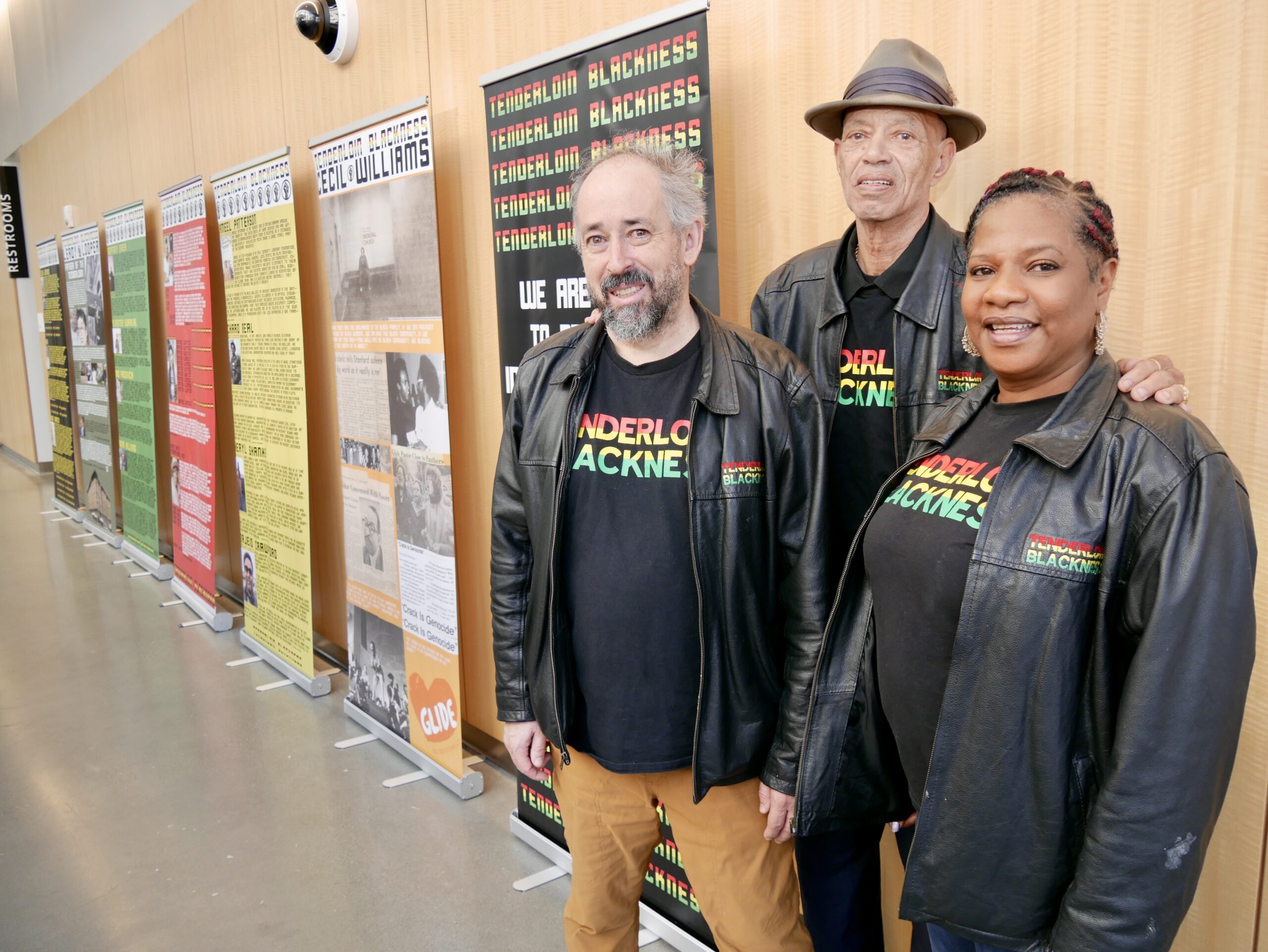‘Tenderloin Blackness’ Exhibit Brings Stories of Resilience and Community to UC Law SF

Tenderloin community advocates Dennis McCauley, Del Seymour, and Shavonne Allen gather at UC Law San Francisco’s 198 McAllister building to celebrate the “Tenderloin Blackness” exhibit, which honors the artists, leaders, and individuals that contribute to the neighborhood’s creativity and resilience.
A new exhibit on UC Law San Francisco’s campus is shining a light on the Black artists, advocates, and residents who have shaped the Tenderloin neighborhood into an influential and resilient community in the heart of San Francisco.
“Tenderloin Blackness,” now on display in the lobby of UC Law SF’s 198 McAllister building, celebrates the often-overlooked contributions of local leaders, artists, and residents who give the neighborhood its rich cultural identity.
The exhibit, which will remain on campus through at least March 25, was organized by community advocates Del Seymour and Shavonne Allen, in partnership with the Tenderloin Museum and others. It showcases influential figures such as the Rev. Cecil Williams of Glide Memorial Church, renowned for its social service programs, and Leroy Looper, who pioneered drug treatment programs and affordable housing in the Tenderloin. Alongside these icons are contemporary artists working in murals, sculpture, fashion design, and more, as well as everyday residents whose stories of resilience inspire others.
“We wanted to show that role models do exist in the Tenderloin,” Seymour said. “They’re the people who have overcome challenges and now uplift others. Seeing someone from your own community succeed makes it easier to believe that you can, too.”
Seymour, a community leader who founded Tenderloin Walking Tours and Code Tenderloin, has been a driving force in promoting the neighborhood’s strengths while creating job opportunities and advocating for residents. Allen, a lead artist with Skywatchers, a Tenderloin-based performing arts collaborative, works with multiple local organizations to uplift the community through art and storytelling.
The duo conducted interviews and gathered stories to bring the exhibit to life, ensuring it not only honors prominent figures but also highlights individuals who have triumphed over struggles such as addiction, homelessness, and incarceration to become pillars of the community.
“Hopefully, they’ll see a different side of the Tenderloin,” Seymour said, pushing back against media narratives that often focus solely on the neighborhood’s challenges.
“There’s a whole other part of our neighborhood that people don’t get to see,” Allen added. “The neighborhood I know is reflected in the stories and relationships in the community.”
UC Law SF has called the Tenderloin home for more than 70 years, since opening its first permanent campus building at 198 McAllister Street in 1953. The college has long been an active supporter of the neighborhood, with students regularly volunteering at local charities like St. Anthony’s.
David Seward, UC Law SF’s chief financial officer and a board member for the Tenderloin Museum, said the exhibit helps connect students to the community and reinforces the importance of using legal education to serve the public good.
“UC Law SF has deep roots in the Tenderloin, and we value the opportunity to support and learn from our neighbors,” Seward said. “This exhibit reflects the rich history and resilience of the Tenderloin and gives us a deeper understanding of the people who shape it.”